English Passive Voice Teaching Method - Useful for All Levels (Humor Included)
The past, the present and the future walk into a bar... It was tense.
English Passive Voice Teaching Method - Useful for All Levels
After sitting down with the son of a colleague who is having troubles in English to give him a leg up, I decided to finally write down the method I have been using to teach the passive successfully for some time now.
I began developing this method a number of years ago after becoming dissatisfied with the treatment of the English passive voice in the textbooks available for my school district. Having looked through literally all of the ESL books available in our school library, I realized they all treat the passive voice in the same way - one or two tenses at a time, bit by bit, every few chapters.
Even if you like teaching passives one or two tenses at a time, this method, particularly Phases 1-6 below, should be very useful for you at any level.
When I use this method
I use this lesson when my students meet CEFR B1 language standards and they have been introduced to all the tenses. When it comes time for the passive voice transformations, rather than teach them one or two tenses at a time, I teach them all at the same time.
I know this is not how things are generally done. But I have had considerable success with this method, because it does 5 things:
- Uses fun examples that can be tailored to any common class interest.
- It focuses on what the passive does and why in an entertaining way.
- It focuses on the consistent structural transformation that is necessary to formulate the passive.
- Retention of the grammar rules appears to increase significantly because of the drilling employed.
- Ability to apply the rules across all tenses increases significantly (and it is a great complete tense review).
I know that this may seem overwhelming for many students at first glance, which was my concern the first time I gave it a try, but I was truly surprised at how well it works.
Materials necessary
Chalkboard
Chalk
Students' notebooks and writing utensils.
Optional: print outs of "be" chart - all tenses.
Yes, that's all you need! This means you can do this lesson with just a chalkboard and piece of chalk.
How I do it
I personally have a very upbeat and fast-paced patter when teaching, where I use my voice-acting talents to highlight various important aspects, which is difficult to convey in text. That isn't necessary of course, but in the run up to the grammar part of a lesson I like to drop the intentionally bad humor bombs like, "We are going to have so much fun with grammar today it will make you poop your pants if you're not careful!".
Of course, there may be some environments where you can't get away with this (maybe evening classes for professionals), but I am in area and working with age groups where it isn't a problem. I know this approach sounds cheesy, and it is. The whole point is to introduce a light-hearted and entertaining atmosphere, even if the students are embarrassed for me because of the cheesiness. This is because I like fostering a cheerful environment and they are about to be grammar bombed in a big way so I want their spirits and motivation high.
The Method
Phase 1
Write on the board:
"Active voice = emphasis is on the agent that performs the action:"
and
"Passive voice = emphasis is on the action performed:"
Leave enough space in between to fill in examples during the next phase.
Phase 2
Using your knowledge of class interests, be it a picture on a binder, the favorite band of some of the students etc., write an example in the simple present below the sentences above. Examples I have used in the past include "Zombies eat brains", "Cats chase mice", "The domina gladly whips her client," etc. Most recently one of my students had a unicorn on her binder and a glittery unicorn pen. Being familiar with the meme of unicorns pooping Skittles, I went with that and provided examples:
"Active voice = emphasis is on the agent that performs the action.
ex: Unicorns poop Skittles. (simple present, active voice)
and
"Passive voice = emphasis is on the action performed:
Skittles are pooped by Unicorns. (simple present, passive voice)
Phase 3
Don't focus on the structural transformation yet. Go through the difference in meaning of the two sentences by emphasizing the active and passive aspects.
Point out that the prepositional phrase "by Unicorns" in the passive form is not necessary to convey the meaning the sentence contains. Erase or put the "by Unicorns" in parantheses so it reads:
Skittle are pooped (by Unicorns).
Phase 4
Elicit the tense of the example and segue into how the structural transformation takes place. e.g. "Okay, who can tell me what tense our active voice example is in? - Simple present is right, good job, okay, now we are going to look at how we make transform the active into the passive." Go through each step very slowly and clearly.
Step 2: Add the verb "be" in the appropriate tense and conjugation (here simple present plural: 'are')
Step 3: Add the main verb of the active voice in its past participle form (3rd form).
Step 4: add the preposition 'by' and the subject of the active voice, here 'unicorns'.
Emphasize that even when the transformation takes place, the sentence is still in the simple present tense even though it "looks different".
Phase 5
Divide the chalkboard into a grid of 3 x 5 while continuing the flow with a little patter, e.g. "I really love Skittles you guys, I hope I can get this picture out of my head sometime soon. What we are going to do now is do the active to passive transformation in all of the present tenses, who can tell me what they are?" Write the present tenses down as they are provided by the students. Elicit the formulation of the sentence "Unicorns poop Skittles" in each tense and enter them in the chart.
Phase 6
One by one, in the same manner as what we did in Phase 4. I do this by saying "Step 1, what do we do? Step 2, what do we do?..." etc. and fill in the chart as the students provide the answer.
Steps two and three are often where students stumble in the beginning. If the group is having difficulties, I will literally do Phase 4 with every tense, drawing the arrows, adding the '+' sign and underlining words in each step as exampled above.
I have found that Step 2 is the step that has to be drilled the most. Students must be able to identify the tense of the active voice verb and understand that when they add 'be' it must be in the same tense as the main verb in the active voice. I always write "The verb 'be' must be added in the same tense as the main verb of the original sentence."
Because this is where it really makes a difference in student's results, I am going to repeat this with an example. Don't skip ahead, you will be repeating this in class. Trust me.
Let's take the present perfect continuous active form as our example:
Unicorns have been pooping Skittles.
Ask the students to identify the tense again, ask how it is formed, when we use it, etc. Everything to make sure they are really focusing on the present perfect continuous form. Then ask them what the present perfect continuous form of 'be' is.
Do this with as many examples as necessary until it rolls off their tongues what tense they have to provide 'be' in. I typically stick to the present tenses here, simple, continuous, perfect and present perfect continuous and mix up the order until they get it right every time. Here I frequently draw in other examples with other verbs, ex "Zombies have eaten brains" any other one that appeals to the class.
Interlude
Very often, students do not remember how to conjugate 'be' in all forms. If that is so, I do take the time to write them all out or provide them with the following chart and go through it. This takes extra time, but allows the students to reference the tense list of 'be' while forming the passive and guarantees accuracy when adding 'be'.
Note this chart only includes the 'will' form of the future continuous and future perfect continuous, the 'be going to' form is omitted for brevity's sake. It is also useful to do this with the verb 'have'.
Teacher's note: Keep in mind that it is uncommon to use the passive voice in the present perfect continuous, past perfect continuous, future continuous and future perfect continuous because the presence of two different forms of the verb "be" is considered awkward or confusing. That does not mean however that those grammatical forms cannot be formed. For the sake of completeness I generally do all of them, but one can simply leave them out if one wishes. The extra mental gymnastics required really solidifies the transformation patterns.
Interlude over!
Phase 6 continued...
When you are done, the chart should look like this.
Phase 7
Wash, rinse and repeat with the past forms. The chart should look like this in the end:
Phase 8
Wash, rinse and repeat with the past forms. The chart should look like this in the end:
Phase 9
I tend to wrap up this lesson or series of lessons, depending on how much repetition is needed, by providing a number of example sentence in the active voice and having the students transform them into the passive voice. Then I provide a number of sentences in the passive voice and have the students transform them into the active voice.
Phase 10
Erase the board and ask the students how to form the passive step-by-step without looking at their notes (from Phase 4). When that is done, I tell them it is pop quiz time, their favorite part of every class! They have 2 minutes to memorize the rules of how to transform from the active to the passive. At the end of the 2 minutes I tell them to put their notes away and take out a blank piece of paper. Ask them to write an example sentence of their choice in any active voice tense and transform it into the passive by numbering all four steps as we did in Phase 4 above, together. That's it, you're done!
By this point, your students will all want to move on to
Phase 11:
That's what happens when you eat too many Skittles!
Conclusion
Thanks for taking the time to read this and I hope it helps with teaching passive voice transformations! I don't get around to writing up my teaching methods that often but I do enjoy it. If there is a topic you want to teach and would like to know how I go about it, just leave a comment.

.
.
.
Shot with a golden arrow,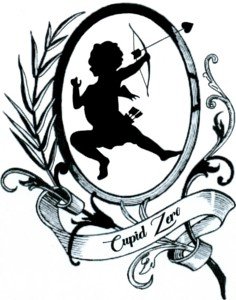
.
.
.
Don't forget to upvote, follow and resteem! Comments always appreciated.
.
If you want an update via reply for when I post a new contributions on a certain topic, please note so in the comments.
If you are like me, my feed is flooded so I sometimes overlook something I have been waiting for.
.
.
.
All gifs courtesy of Giphy
All other images are my own - feel free to use them!


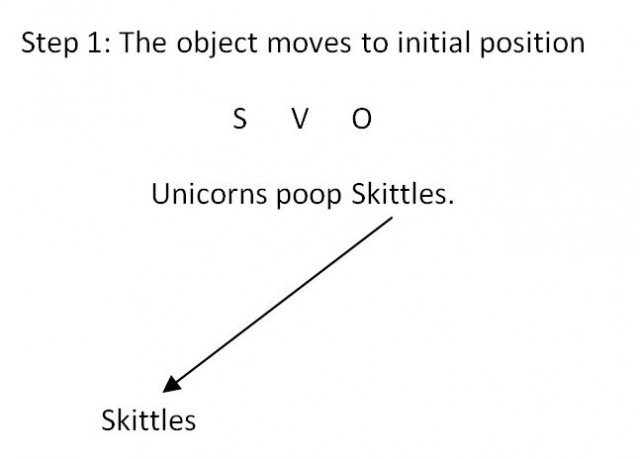
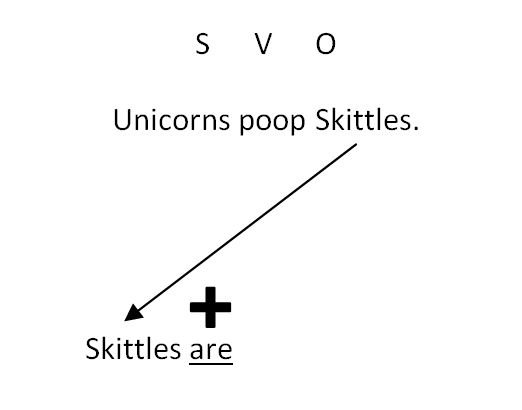
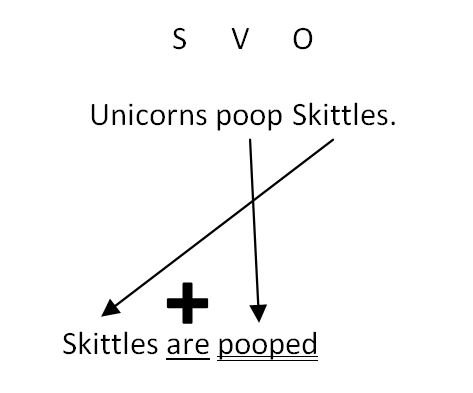
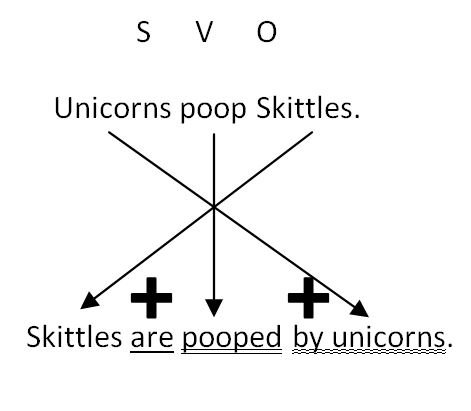

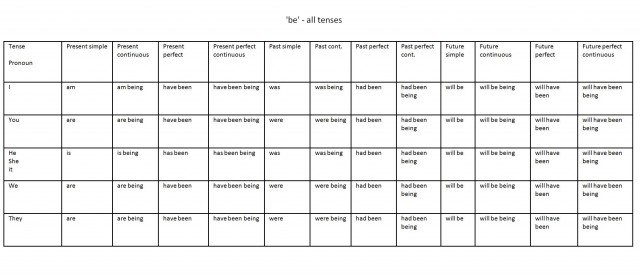




a great post about education ..
good work keep it up..
ypvoted you and following you now.. :) :)
This post has received a 0.63 % upvote from @drotto thanks to: @banjo.
Thank you @drotto and @banjo! Very kind! :)
You are welcome, though I don't know why you thank me.
I don't understand how the bots work all that well, but drotto's post above says you gave me a .63% upvote, thus the thanks. ;)
It's really that the accuracy of measurements of certain variables have a direct impact on what we can know about certain other variables.